The Oriental Republic of Uruguay is one of those countries that tends to remain on the fringes of the global consciousness. Every now and then, you’ll hear about how Uruguay became the first South American country to legalize gay marriage or how it ranks surprisingly high in terms of democracy, prosperity, and quality of life, and then it’ll disappear for another little while until the next time it pops into your news feed with a cheerful headline of some sort.
Indeed, this humble place of just over 3 million inhabitants is often overlooked by travellers planning a trip to South America. But there’s certainly more to this country than meets the eye, and if you’re in Buenos Aires, a side-jaunt to Uruguay is one of the most enjoyable things you can do. Allow me to share with you the highlights.
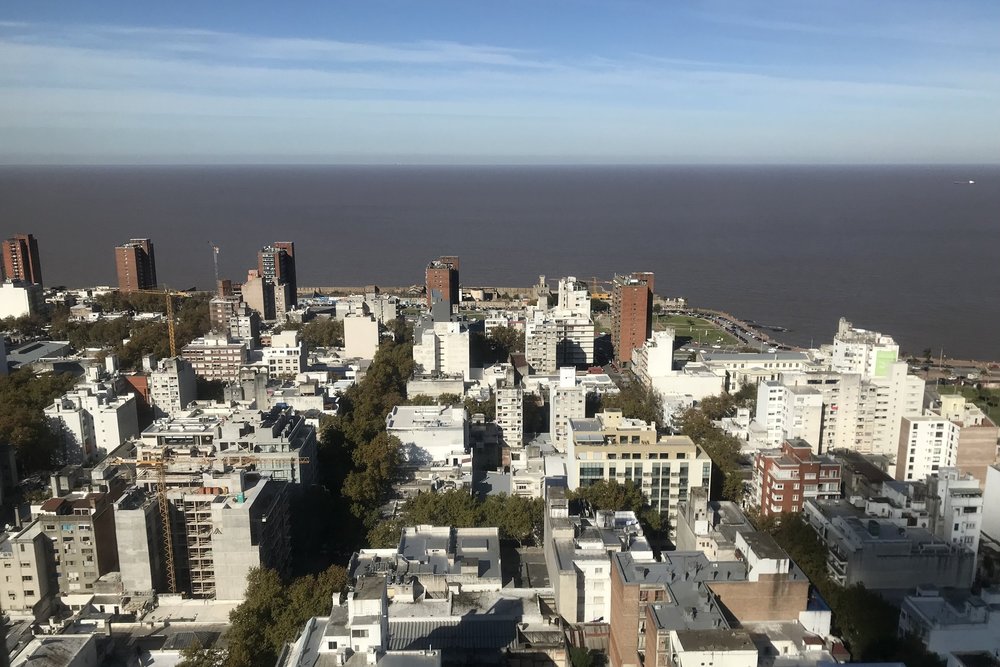
Montevideo, Uruguay
Getting Between Argentina & Uruguay
Our time in Uruguay was spent in two cities. Colonia del Sacramento is the southwestern Uruguayan locale that acts as a hub for sea transport between Argentina and Uruguay, and most ferries that cross the river shuttle passengers from here to Buenos Aires. Meanwhile, Montevideo is the country’s capital and largest city, home to over half of the population.
There are three companies offering ferry services across the Río de la Plata between Argentina and Uruguay: from most to least expensive, they are Buquebus, Seacat, and Colonia Express. You can catch a ferry directly between Montevideo and Buenos Aires with Buquebus, whereas Seacat and Colonia Express will get you to Colonia by ferry and then onwards to Montevideo via a three-hour bus ride.
For our trip, we intended to spend some time exploring the town of Colonia (a significant historical landmark in its own right and a UNESCO World Heritage site) before heading on to the capital. Therefore, we booked open-jaw tickets with Colonia Express – from Buenos Aires to Colonia, and then from Montevideo back to Buenos Aires the next day – for about $120 per person, intending to purchase a cheap one-way bus ticket on our own to fill in the gap.
The passenger experience onboard Colonia Express was smooth and unremarkable. Exit and entry immigration for the two countries are completed at the port of departure, and the ferry itself is perfectly serviceable, albeit slightly run-down. There’s also a small shop onboard for snacks and duty-free items, but don’t expect hot meals of any sort.
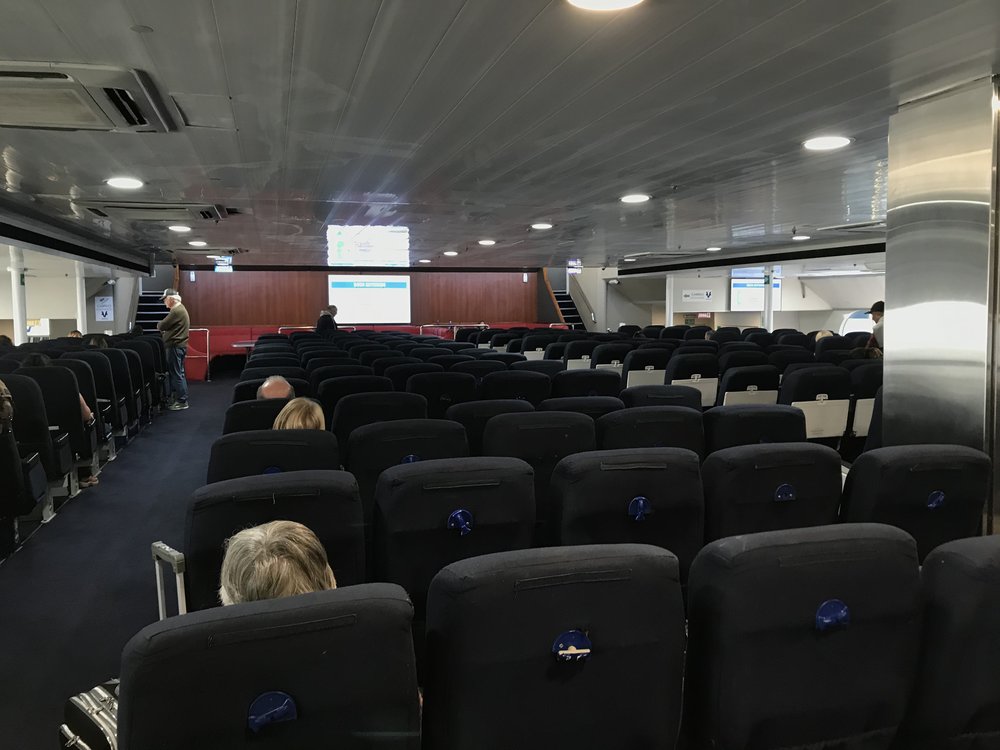

If the ferry isn’t quite your thing, you can of course always fly between the two countries. Aerolineas Argentinas and Amaszonas Uruguay both operate the 50-minute hopper route between Buenos Aires Aeroparque (AEP) and Montevideo (MVD).
Colonia del Sacramento
A leafy settlement with a charming historical quarter, Colonia del Sacramento is certainly worth a half-day stopover on your way to Montevideo. The city is aptly named after the Spanish and Portuguese word for “colony”, having changed hands seven times between the two empires over the course of its rather checkered past.
It’s a tranquil walk from the ferry terminal to Colonia’s old town via a cobblestone street lined with languishing plane trees, and the only disturbance is the occasional gust of wind from the riverbank.
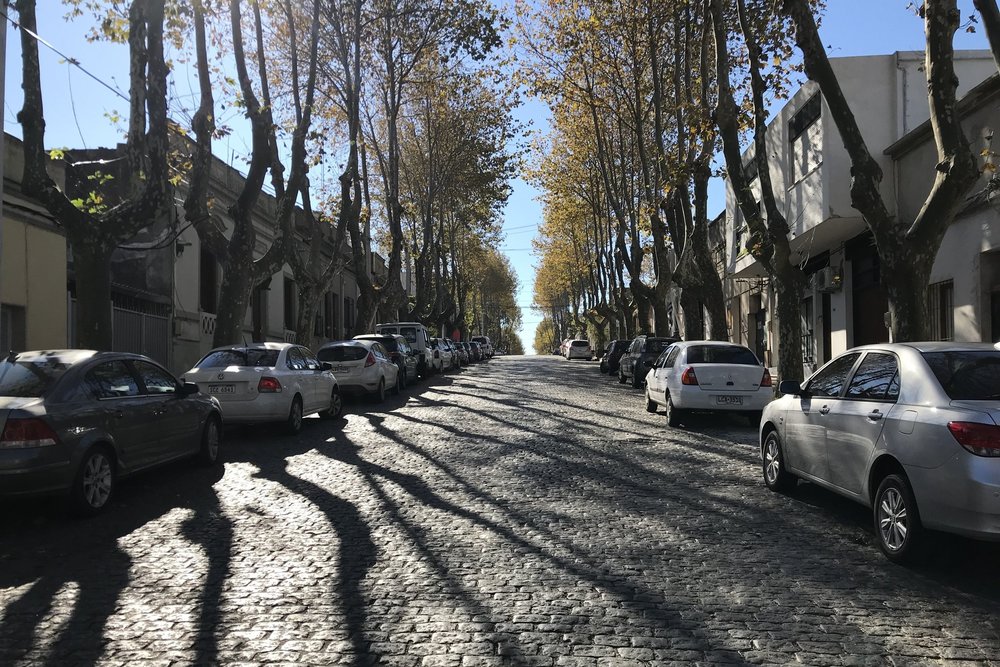
Colonia del Sacramento, Uruguay
An enclave of its Portuguese colonial past in a city that’s now fully integrated into the Hispanosphere, Colonia’s old town features broad, hilly streets that conform to the peninsula’s irregular terrain. The brick houses are adorned with Portuguese-style ceramic tiles and provide the backdrop to the dozens of vintage automobiles that line the streets. The waters of the Rio de la Plata – so wide a river that it might as well be a sea – collapse calmly against the grassy coastline, giving Colonia that classic vibe of a seaside resort town.
[foogallery id=”16957″]
You can browse the numerous artisanal craft shops, or stop to hang out with the burgeoning population of stray, yet entirely docile, dogs. Meanwhile, the lighthouse is the centrepiece of the historic district and the city’s main attraction, and an ascent to the top provides visitors with sweeping river views.
There’s also a few historic ruins at the base of the lighthouse that are interesting to look at. The dogs seem to have marked their turf here, so don’t be surprised if one of them saunters up next to you for a photo op.
There are several restaurants that offer lunch menus within walking distance of the lighthouse. Unlike Buenos Aires, where red meat reigns supreme, seafood is back on the menu around these parts. Jessica and I spent a relaxing few hours enjoying the patio at El Drugstore Restaurant, who served up a mean chicken and seafood paella, before taking in the sunset on our walk back to the bus station along the beautiful shoreline.
[foogallery id=”16960″]
Walk-up bus tickets are easy to purchase at Colonia’s bus terminal, with a one-way trip to Montevideo costing 375 Uruguayan pesos (~$16) per person. We snagged a few seats on the 6pm departure, which would get us into Montevideo at about 9pm.
Montevideo
As far as national capitals go, Montevideo is rather compact. However, I found it odd that while most its attractions are located within walking distance of each other around the focal point of Plaza Independencia, many of the upscale hotels are instead based in Punta Carretas, a peninsula on the city’s southern side that’s about a 15-minute drive away from the historic town centre.
We rested our heads for the night at the Aloft Montevideo, with the other compelling Starwood option, the Sheraton, right across the street from us. The next morning, we picked up some breakfast from the impressive Disco supermarket next door, before taking an Uber to the Ciudad Vieja (“Old City”) district.
Speaking of Uber, it’s just as accessible and easy-to-use here as it was in Argentina, and I didn’t run into a single issue across four separate trips. You’ll pay roughly $5-6 for a trip between any of the main bus terminal in Tres Cruces, the Punta Carretas area where the hotels are concentrated, and the touristic parts of Ciudad Vieja, which are all roughly equidistant from each other.
In keeping with the vibes of the country as a whole, Montevideo’s historic centro is the perfect size to explore on foot at a leisurely, laid-back pace. Begin at Plaza Independencia, which is no ordinary city square.
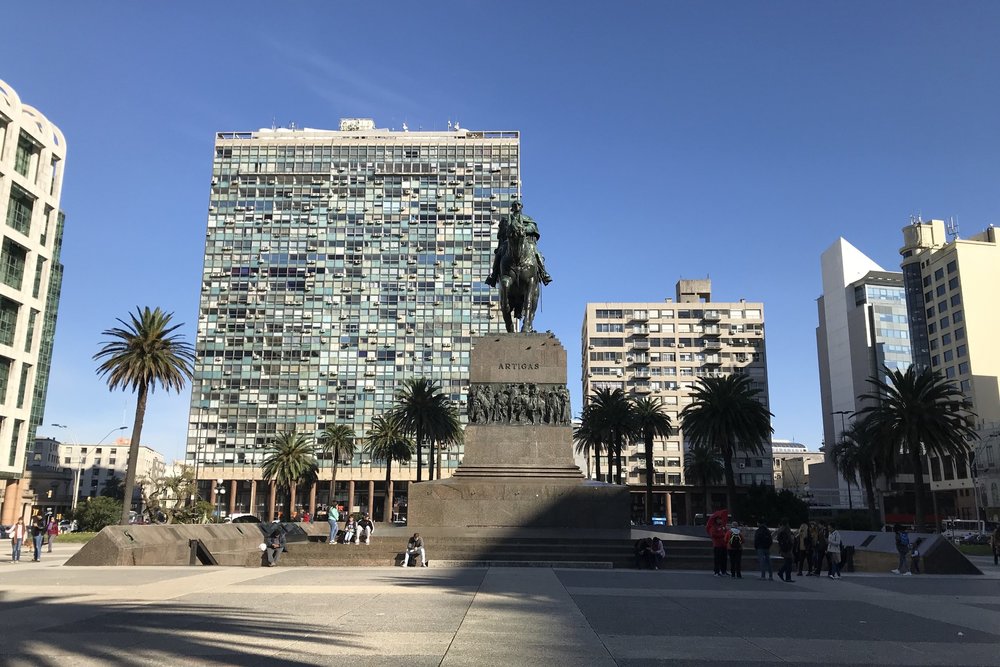
Montevideo, Uruguay – Plaza Independencia
The statue of José Gervasio Artigas, the staunchly democratic Uruguayan national hero who fought against British, Portuguese, and Argentine invasions, dominates the perspective, but what may surprise you are the steps leading underground on either side of the statue. Don’t be fooled into thinking this is a subway station of some sort – indeed, it’s actually the Artigas Mausoleum, where the general’s remains are kept and guarded 24/7.
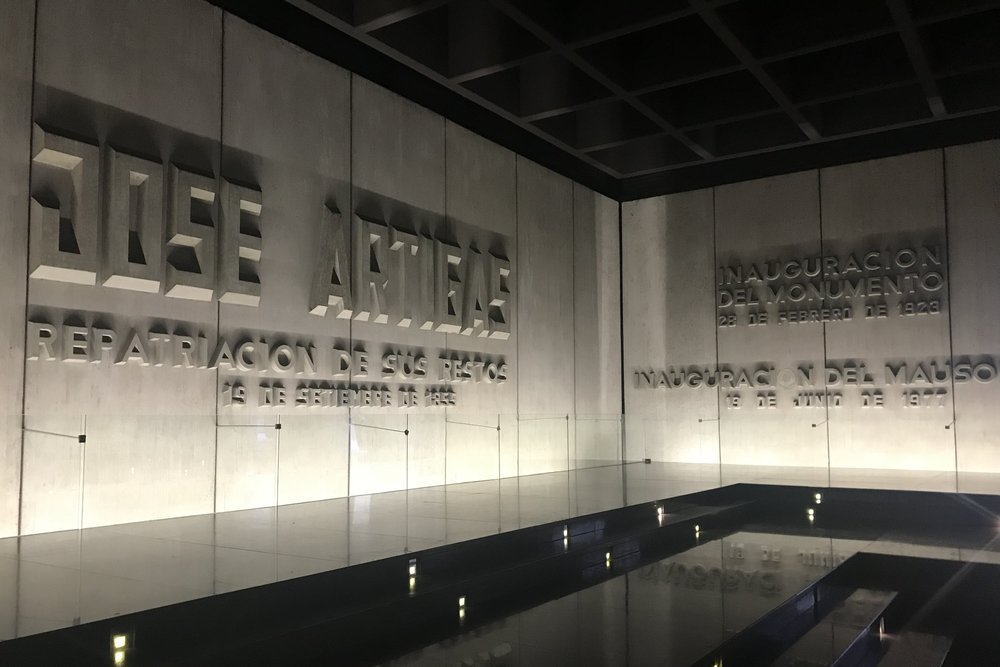
Montevideo, Uruguay – Artigas Mausoleum
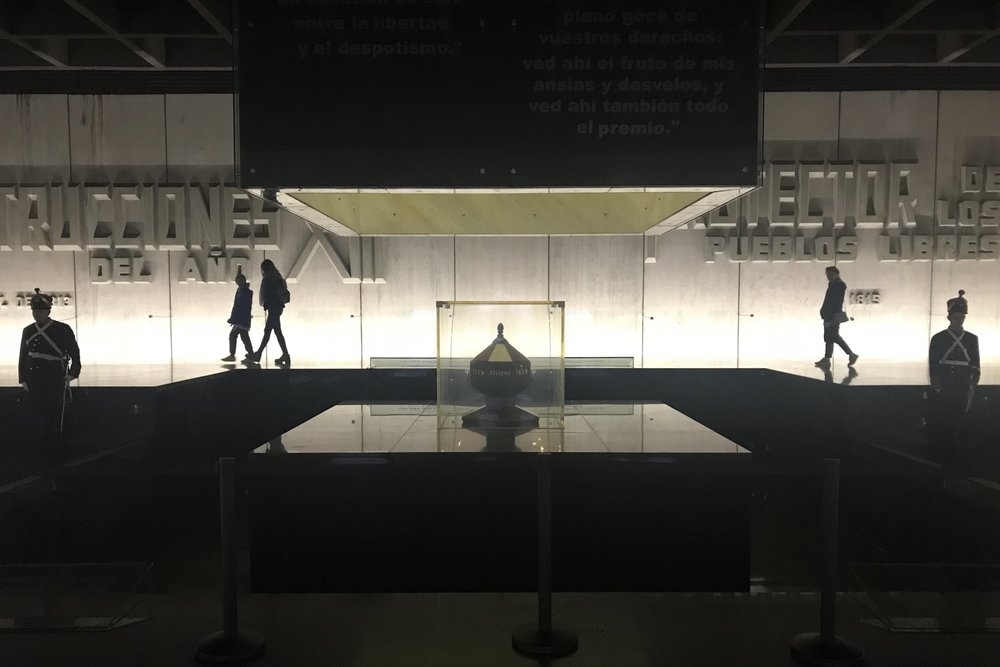
The guards appear to be standing, but we caught them leaning!
Facing Plaza Independencia is one of Montevideo’s most iconic buildings, the Palacio Salvo. Come here in the mornings for Mañanas en el Salvo, a guided tour of the eclectic building that once stood as the tallest in Latin America. Originally planned to serve as a hotel, the building actually houses a mix of residential and office units, and the tour brings you through many of its floors, terraces, and stairways. I was surprised to learn that such a historically significant address commands a relatively modest rent – about 15,000 Uruguayan pesos (~$620/month) – and it strikes me as the perfect place to post up for an extended stay or a study abroad program in Uruguay.
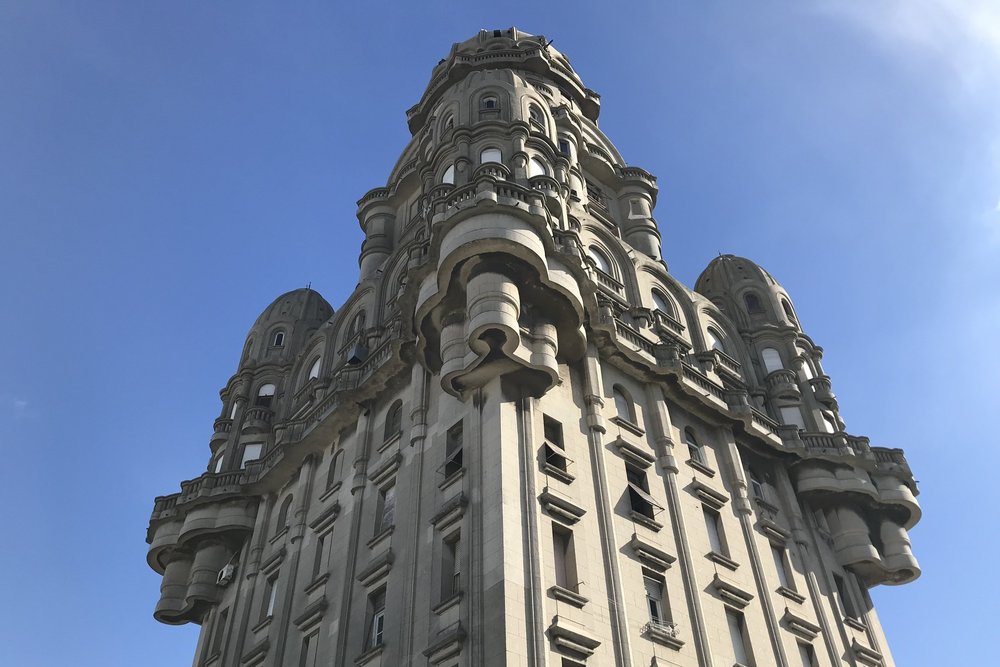
Montevideo, Uruguay – Palacio Salvo
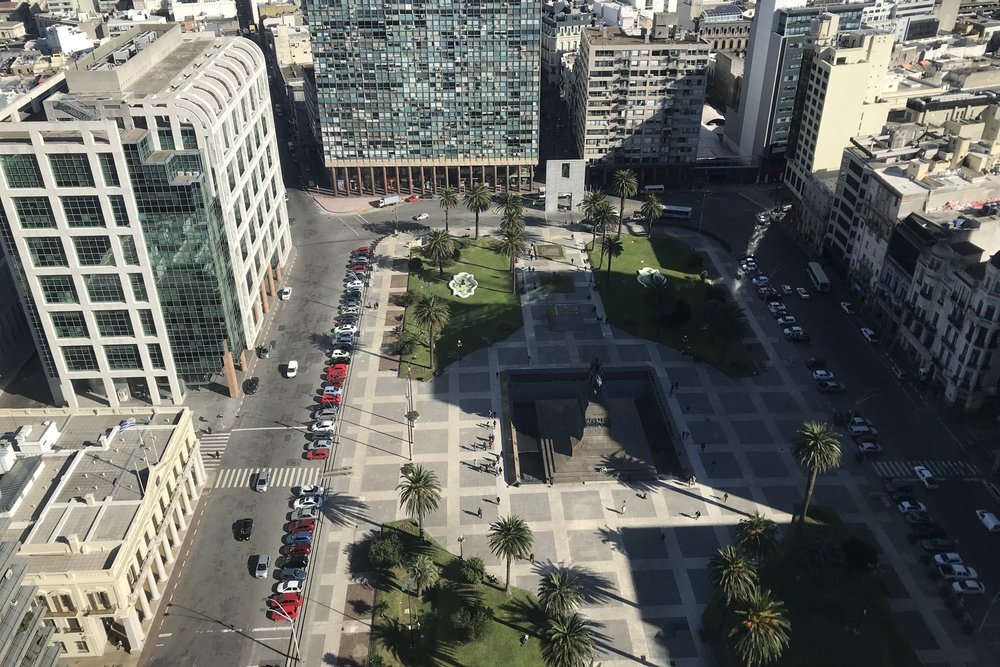
View from Palacio Salvo
After your tour of the Salvo, you can check out the adjacent presidential buildings – both old and new – on Plaza Independencia’s south side, before continuing your journey into the heart of Ciudad Vieja. You’ll pass through the Gateway of the Citadel – one of the few remnants of the old city wall, which today sits rather amusingly on a median in the middle of the busy roadway – to arrive at Sarandí, an arterial pedestrian street that plays host to the city’s best shops, cafes, and restaurants.
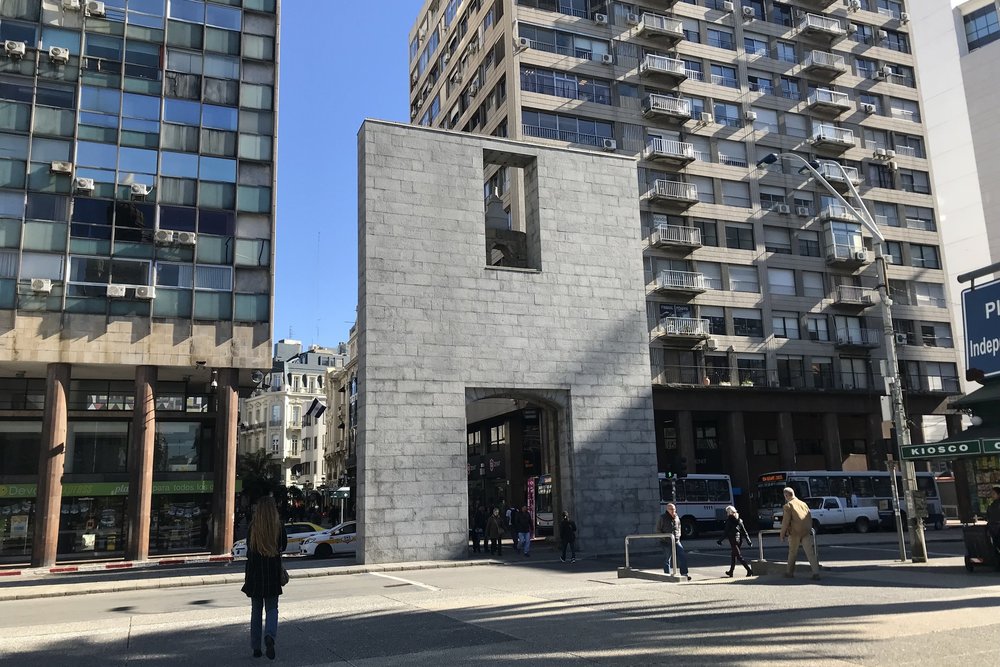
Montevideo, Uruguay – Gateway of the Citadel
We chose to stop for a bite at Estrecho, a popular lunch spot where modern South American and international ingredients are combined and served along a countertop in an open-kitchen setting. Afterwards, we walked a few more blocks to look at the Teatro Solís, the city’s landmark theatre dating back to 1856, before requesting a ride back to the Tres Cruces bus terminal for our 4pm bus-and-ferry trip back to Buenos Aires.
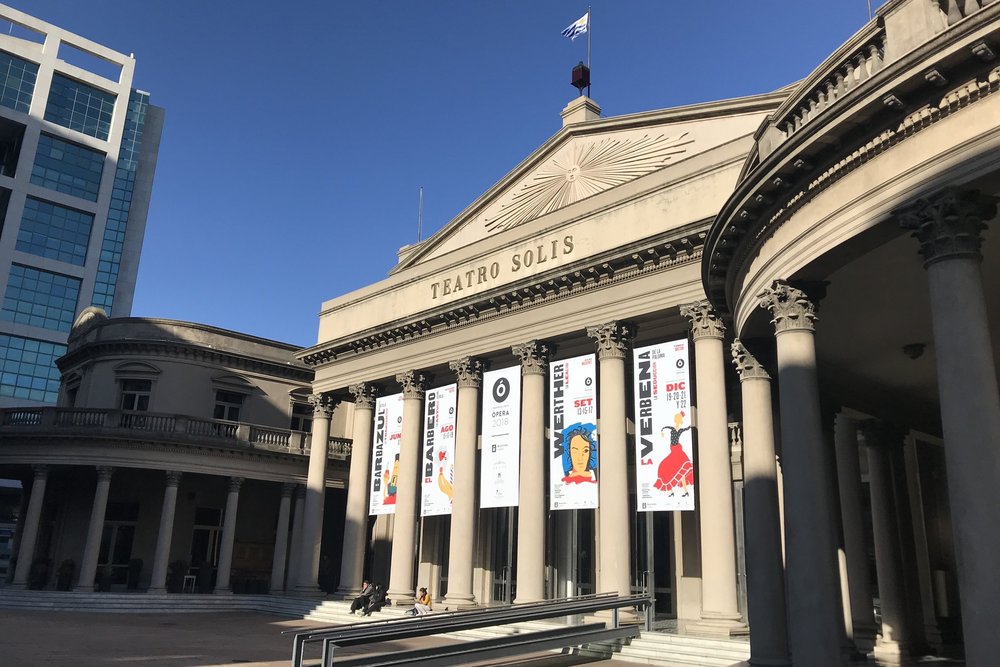
Montevideo, Uruguay – Teatro Solís
Conclusion
While Uruguay doesn’t have much in the way of world-renowned tourist attractions, it’s ideal for those of you looking to just chill out. The historic quarters of both Colonia and Montevideo are perfect for exploring on foot, and the people of the country are notably upbeat and friendly – carry your mate gourd around with you and you’re sure to be offered a fill-up from strangers.
Overall, I found Uruguay to be strikingly modern and developed, yet entirely unassuming, in keeping with the wholesome headlines it makes in the news. If I ever wanted to just take it easy for a little while, a return to the tranquillity of Montevideo – perhaps even an extended stay in the Palacio Salvo – certainly would not be out of the question.














